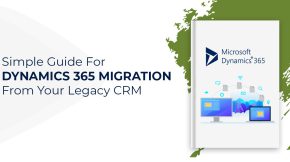Dynamics 365 Modules: The best integrations to help your organizations
Dynamics 365 was created to help organizations with four digital transformation outcomes. These outcomes are: optimize operations, transform products, empower employees, and engage customers. To help organizations with these transformation outcomes, Microsoft Dynamics has 11 core modules. Dynamics 365 modules give organizations the flexibility to improve whatever specific outcome(s) they want to achieve. When used correctly, the modules can have an almost magical effect on whatever outcome you target.
Digital Transformation Outcomes
We mentioned above the four transformational outcomes for dynamics 365. To understand how Dynamics 365 modules can help your organization, here is a short explanation of what each outcome does for your organization.
Here are the goals for these outcomes.
Optimize operations– How efficient is your organization? How fast can you deliver your product or service in the most cost-effective manner possible? Companies’ ability to streamline expenses and maximize revenue is what keeps some companies from failing during downturns while others thrive.
Transform products-Innovation is important for any organization today. Therefore, companies need to have ways to continually improve their product to keep up with market standards and customer expectations.
Empower employees– Organizations need to engage and respect their employees, or it will be almost impossible to effectively execute any operations or customer strategy.
Engage customers– Customers are the lifeblood of any company. That is why it is important to make sure that marketing, sales, and customer service work together to create a seamless customer experience.
What are the Different Dynamics 365 Modules?
Before we talk about how to reach specific outcomes, we need to discuss the 11 core Microsoft Dynamics 365 modules.
The 11 core modules are:
a. Sales– an AI-powered CRM
b. Customer Service– support desk tools for inbound calls, emails, social, chat, and text
c. Field Service– support tool for a technical team making outbound service trips
d. Human Resources– full employee management system (hiring, PTO tracking, etc.)
e. Finance and Operations– financial and payroll tracking
f. Commerce– connects in-store, eCommerce, inventory, and customer loyalty campaigns
g. Project Service Automation– project management tool helps streamline the process
h. Marketing– client communication tool with personalization and automation features
i. Artificial Intelligence– business intelligence insights
j. Mixed Reality– an exciting new module that includes remote assist, augmented reality, and product visual features to combine real-life elements and digital
k. Business Central– This ERP provides a pre-packaged solution with several modules.
Three Different Ways to Create Dynamics 365 Modules Magic
1. ERP
Business Central is the ready-to-use integrated Dynamics 365 Module package for small to medium-sized businesses (SMB). The tool is an ERP (Enterprise Resource Planning) tool, which combines multiple software products into one large service.
Microsoft designated its Business Central ERP to help organizations manage their finances, human resources, supply chain, and manufacturing in one central location. Every SMB wants to find the best value for the lowest price. The challenge is that many end up adding multiple services that do not work together.
Companies waste countless hours trying to get everything to work together. Some companies end up spending on developers to patching the system together than they do on the ERP.
Also, maintenance is a huge issue when you don’t have a comprehensive system because whenever a service updates or upgrades its software, it could ruin the previous setup.
An ERP provides an easy turnkey solution for companies who just want it done for them. Furthermore, Microsoft’s Business Central helps companies who want to
2. Mix Dynamic 365 Module with each other
What happens if you want multiple services, but not the entire ERP?
For example, maybe you want to use the Marketing and Sales modules to unify your prospecting efforts. While it might make sense to add a financial and even an HR module, the question then becomes do you need mixed reality, artificial intelligence, or field service.
If you find it best to use certain modules and save money on the entire ERP, this is possible with Microsoft Dynamics 365. You can even integrate certain parts of Dynamics 365 with other tools in the Microsoft 365 ecosystem.
We have worked with several companies that combined Dynamics 365 with the Power Platform. The Power Platform includes Power Apps, Power Automate, Power BI, and Virtual Agent.
Here is a likely scenario. A company uses the Financial module to improve its operations. They integrate their reporting with Power BI to give a complete picture of the company’s financials over the past week, month, quarter, or year.
3. Integrate Dynamics 365 Modules with third-party tools
Finally, Dynamics 365 also work with third-party tools through APIs, SQL Server tables, and the Microsoft AppSource.
The AppSource has 2384 apps, as of this article, to add additional features from a variety of third-party developers to your Dynamics 365 modules.
For example, there are 538 results for Dynamics 365 sales apps including DocuSign, MailChimp, Salesgenie, WebEx, and Hootsuite.
We discussed earlier the value of having one system to work together, which is why Microsoft is committed to integrating their solution with other business tools to ensure companies have all the integrations they need to reach their digital transformation outcomes.
Final Thoughts
Every organization has its own needs moving forward. That is why one solution cannot provide all the answers. Instead, it is important to have flexibility. Microsoft 365 modules help you reach your digital outcomes.
If you have any questions about how to use Microsoft Dynamics 365 modules, let us know how we can help. Set up a free 1-hour consultation with one of our Dynamics 365 experts today.
Unlock efficiency with Microsoft Dynamics 365 integrations
Contact us












